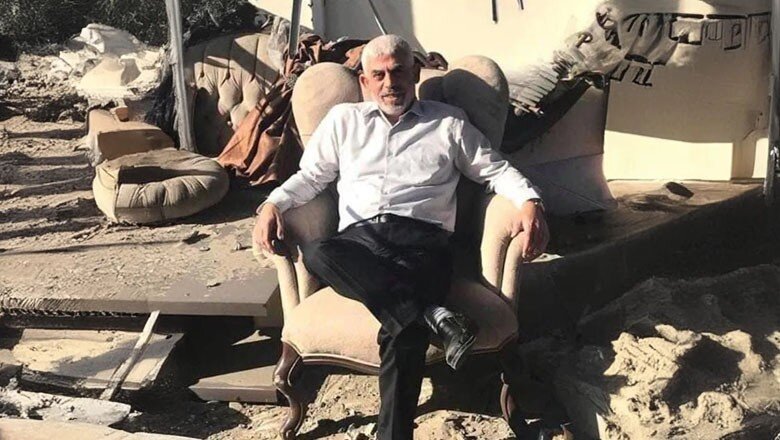The dark side of the moon: damage to the Resistance and resistance against the damage

TEHRAN – Western officials and media outlets have sought to portray the assassination of Hamas leader Yahya Sinwar by Israel as a significant triumph.
This pattern has repeated itself since Israel launched war on Gaza in October 2023; every setback suffered by the Axis of Resistance has been met with triumphant pronouncements from the West. Yet, a crucial twist in the story remains largely unacknowledged—the "dark side of the moon," so to speak: the Resistance's resilience and ability to adapt, often even expanding its activities despite the damage inflicted.
The culmination of this pattern emerged in the immediate aftermath of the assassination of Hezbollah Secretary General Sayyed Hassan Nasrallah. The news sent shockwaves through the Resistance network. The impact was so profound that even the most sceptical military analysts believed the Resistance had been paralyzed, its morale and fighting capacity severely compromised. This was perceived as the ideal opportunity for the Israeli army and its allies to deliver a decisive blow and eliminate the Resistance from southern Lebanon.
However, the scene in southern Lebanon the very next day painted a starkly different picture. What initially appeared to be a series of chaotic, desperate attacks by leaderless fighters, seemingly driven by rage, was revealed in the days that followed to be a carefully calculated strategy. These attacks were a precisely planned manoeuvre, navigating the Resistance along a treacherous, cliff-lined path towards the next stage of escalation.
Since then, the drastic failure to undermine Resistance’s capacities has driven the Israeli army to employ increasingly fanatical tactics, including air strikes against expanded civilian urban areas and ground invasions of border villages coupled with massive destructions using tons of explosives. With the heavy logistical and manpower losses from the latter fueling the intensity of the former, a circle of legally justified retaliation by Hezbollah of the war crimes committed by the Israeli side was created, bringing occupied urban areas deep inside Israel into the battlefield – “a new stage in tensions”, as Hezbollah described.
The fact that Hezbollah, despite losing most of its commanders within a few days, continues to operate under the same framework as if all those commanders were still alive, serves as a disturbing wakeup call. This reality should shake not only Israel and its political allies, but also the Israeli public, media, and their supporters worldwide.
The horrifying footage of gigantic ponds created by 85 tons of explosives, used by Israel in an airstrike to eliminate a single man, was intended to be the final sequence before the climactic moment of the script. After that, according to the plot, there was going to be a series of victories, culminating in a classic Hollywood happy ending. But this is not a Hollywood movie.
The West may celebrate its perceived victories, but the resilience of the Resistance remains undeniable. The Axis of Resistance, though battered and bruised, has repeatedly proven its capacity to adapt, evolve, and continue its fight, the DNA of the Resistance. This resilience is not simply a matter of willpower, but a reflection of the intricate network of relationships, strategies, and ideologies that bind the various factions together. From the streets of Gaza to the mountains of Lebanon, a shared sense of grievance and a commitment to self-determination fuel the resistance's spirit.
The Resistance has learned from its past experiences, leveraging the lessons of previous conflicts to refine its tactics and strategies. The use of sophisticated weaponry, the development of effective counter-intelligence measures, and the ability to adapt to evolving battlefield conditions have all contributed to the resistance's ability to withstand pressure and maintain its effectiveness.
Furthermore, the Resistance has successfully fostered a sense of solidarity among its supporters, both within and outside the region. This solidarity provides essential resources which bolster the resistance's capabilities. The growing international awareness of the plight of Palestinians and the increasing support for their struggle for self-determination provide further impetus for the Resistance's perseverance.
While the West may seek to portray the Resistance as a fading force, the reality on the ground tells a different story. The Axis of Resistance, grieves while standing, has repeatedly proven that its existence leans not against individuals, but the ideals. Despite the losses, the spirit of resistance remains undimmed, a testament to the unwavering commitment to achieving their ultimate goals. The struggle may be long and arduous, but the Resistance remains steadfast, determined to endure, and ultimately prevail.
